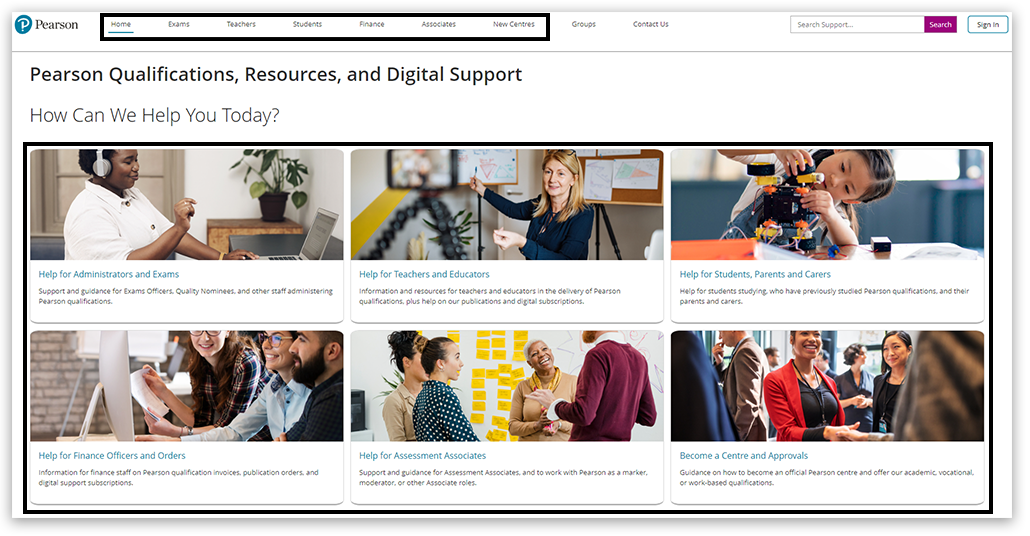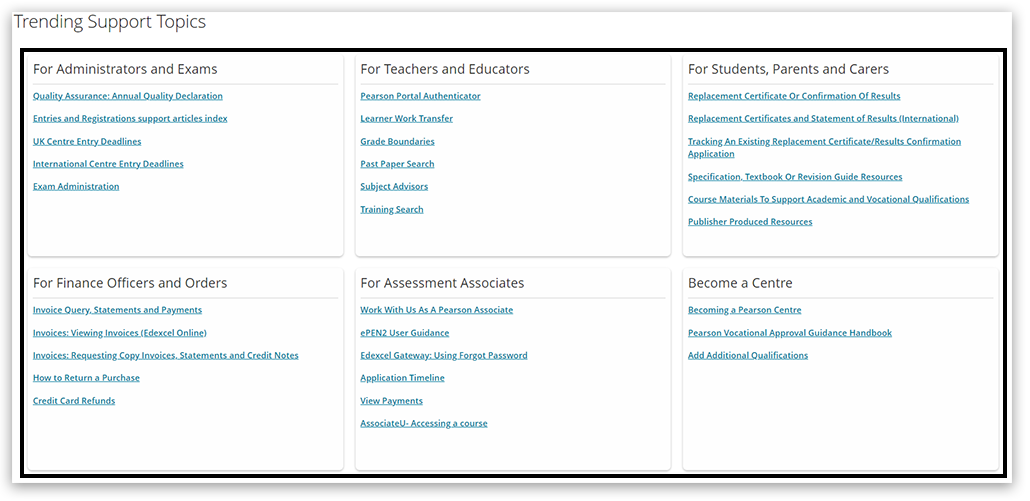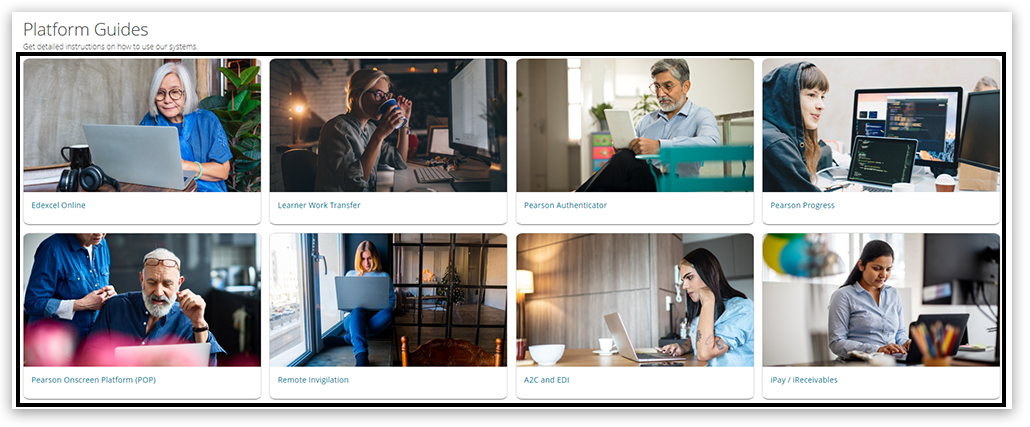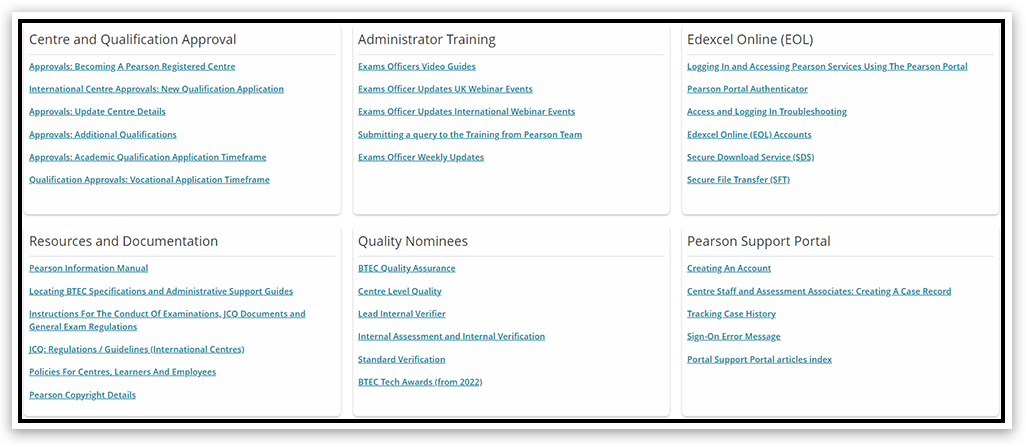|
The Home page of the Pearson Customer Support Portal has been reorganised to provide a dedicated space for each of our main customer types/roles:
- Administrators and Exams Officers
- Teachers and Educators
- Students, Parents and Carers
- Finance Officers
- Assessment Associates
- New centres (approvals)
You can also move between the different customer types using the links at the top of the screen.
Please note: If you have defined your role on your portal profile, you will be automatically taken to your dedicated page once you sign in.

If you scroll down the main home page, you will also find a selection of 'Trending Support Topics':

By clicking on one of the Customer Type titles, you will be presented with support articles that have been organised into Support Topics to make it easier to find the support you need:

We have also arranged our Platform Guides to enable you to find the support you need quickly:

You can also find 'Further Resources' that may link you to additional support, training and resources:

When clicking on any of the tiles in these sections, you will see the support articles we have curated and arranged into easy-to-navigate groups. You can view any required article content by clicking on its title:

| 


